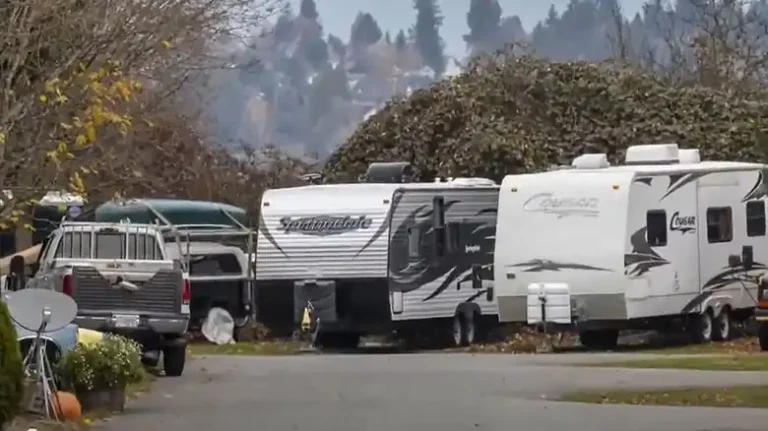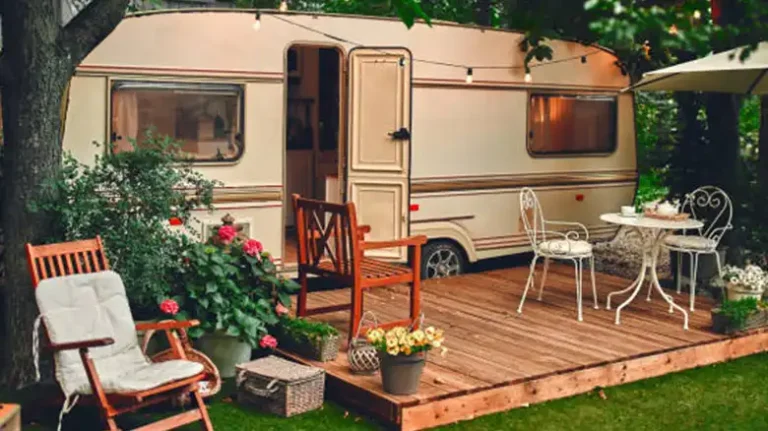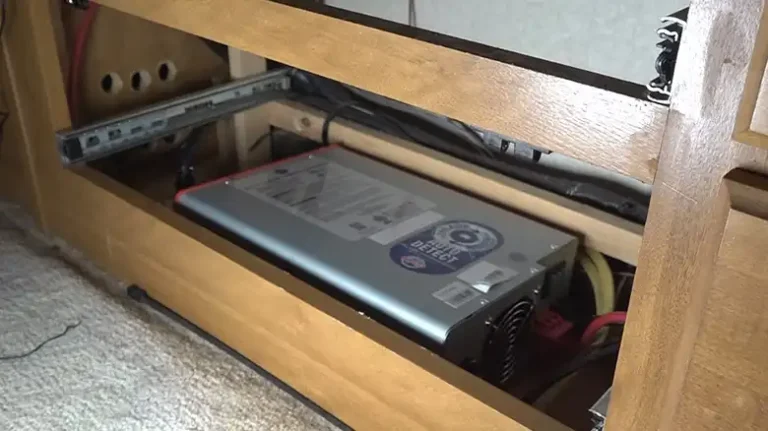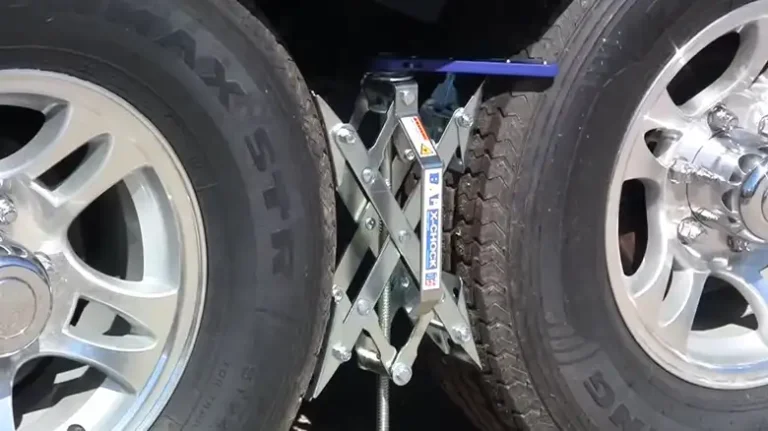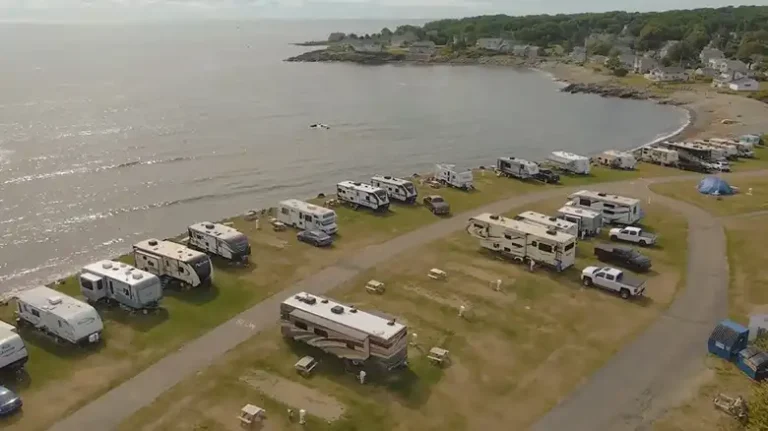What To Know Before Buying A Class C Motorhome
Dreaming of endless road trip views but are overwhelmed trying to decipher the Class C motorhome category? These more compact RVs promise accessible adventure yet sorting specs, brands, and budgets invokes headaches for first-timers. The key to simplifying the Class C buying process is educating yourself beforehand on the different chassis, floorplans, drivetrains, features, and costs associated with these RVs.
Set a realistic budget and make a list of your must-have amenities and desired travel frequency to narrow down the best options. Getting pre-approved for financing and inspecting the vehicle thoroughly are also vital steps before sealing the deal. While buying a Class C is a big decision, going in informed and with clear expectations helps ensure RVing success and enjoyment down the road.
Let’s explore the adventure ahead as we demystify the exciting Class C category and make easy work of securing the just-right model ready to carry you across endless horizons confidently.
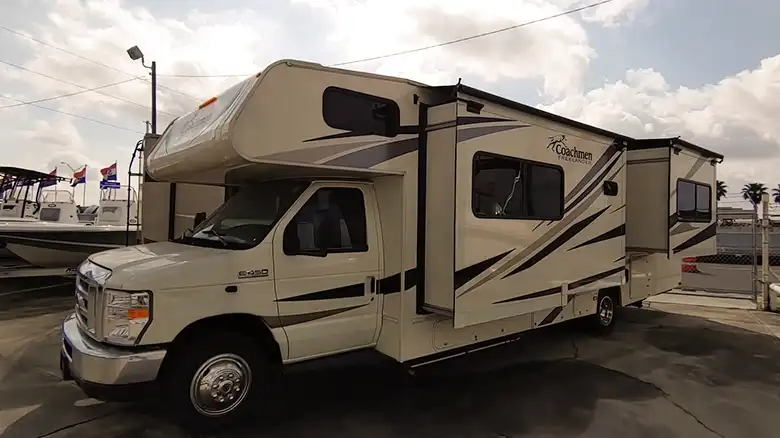
What Exactly is a Class C Motorhome?
Class C motorhomes are recreational vehicles that fall between Class A and Class B RVs in size and features. Also known as “mini motorhomes,” Class C RVs are built on a van or truck chassis but feature a wider, raised roof to provide ample living space. They range from small units just under 20 feet to over 30 feet long.
The distinct feature of a Class C motorhome is the over-cab berth or bed space positioned above the driver’s area. This layout maximizes usable living areas while still allowing a lower overall height for ease of driving. Below the over cab bed, Class C motorhomes typically contain a kitchen, dining area, bathroom, and rear bedroom.
Main Benefits of Choosing a Class C
Several advantages attract RV buyers specifically to Class C motorhomes:
- Easy to drive: Since they are built on a van or truck chassis, Class C RVs handle more like a commercial vehicle than a bus. The smaller size and tighter turning radius also provide greater parking ease and access to driveways.
- Better fuel economy: Their smaller overall weight and profile make Class C motorhomes more fuel efficient than giant Class A models. Most deliver 8-15 mpg.
- Affordable price point: Class C RVs provide much of the same functionality as the Class A at a fraction of the investment, ranging from $60,000-$150,000+ new. Their lower cost makes financing more attainable as well.
- Outdoor livability: From quick overnight campouts to extended travels, the self-contained nature and creature comforts of Class C equip them well for enjoying the outdoors.
Common Class C Motorhome Brands
While small custom builders are producing Class C motorhomes, these six RV manufacturers dominate the mainstream Class C market:
- Winnebago
- Thor Motor Coach
- Forest River
- Jayco
- Gulf Stream
- Coachmen
Within each brand exists multiple Class C lines featuring layouts, specifications, and price points to suit different buyers.
Why Should I Consider Purchasing a Class C RV?
Class C RVs occupy a “just right” middle ground striking an ideal balance of size, ease of use, and affordability. They provide ample living amenities for a family within a dimension that experienced drivers can comfortably maneuver. Compared to larger motorhomes, Class C RVs offer:
- Lower cost of purchase and ownership
- Better fuel economy from smaller engines
- Tighter turning radius and driveability
- Ability to access more camping locations
- Adequate sleeping space and self-contained faculties
- Easier parking and storage between trips
In essence, Class C RVs deliver the flexibility and function for regularly enjoying RV vacations and adventures without the extreme investment or complications of maintaining a Class A rig. Families priced out of giant motorhomes should absolutely weigh the perks and pragmatic benefits of stepping down to a well-equipped Class C.
What Is the Difference Between a Class C and a Class A Motorhome?
While Class A and C motorhomes both contain self-contained living accommodations, they differ significantly in size, customization, drivability, and cost:
- Size: Class A rigs measure over 30 feet reaching up to 45 feet long. Class C RVs are smaller – 19 to 31 feet for most floorplans.
- Chassis/Ride: Class A units utilize bus-style chassis affecting handling and ride dynamics. Class Cs use more nimble van/truck platforms.
- Drivetrain: Class A living areas often sit atop diesel pushers delivering superior torque. Class C models primarily use gas engines.
- Interior Customization: Class A’s higher-end pricing allows greater interior customization potential during ordering for a personalized finish. Production line Class C interiors offer fewer monk custom options.
- Base Cost: New Class A MSRPs start around $125,000 ranging over $500k. New Class Cs cost 1/2 to 1/3 as much depending on amenities.
So while Class A motorhomes essentially provide a “blank canvas” for maximizing luxury living customization, the far more accessible price and drivability of Class C RVs allow sacrificing some space to still enjoy premium family adventures.
What Questions Should I Ask When Looking to Buy a Class C RV?
- What is included in the sale price & what added fees apply at signing?
- Does the model/floor plan best fit my family’s needs for the foreseeable future?
- What routine maintenance schedule does this RV require and what costs are involved?
- What warranty coverage comes included and what optional warranty upgrades are recommended?
- What towing capacity does this particular Class C motorhome configuration allow for?
- Does the dealer/seller provide guidance on properly operating systems post-purchase?
- What type of owner support network or community exists for assistance advice on this RV brand & model outside of the dealer?
- What is the dealer/seller’s protocol should an unexpected major issue surface shortly after purchase?
Asking the right questions before committing grants peace of mind. Savvy buyers seek total pricing clarity and secure prep guidance to maximize initial and long-term enjoyment of their investment. Doing homework makes all the difference driving off the lot confidently on your first trip embracing the Class C life!
Important Factors When Selecting a Class C
Here are the most important factors to consider when selecting a Class C motorhome:
1. Consider Your Budget First
As with any major recreational vehicle purchase, setting a comfortable budget is the critical first step. Class C motorhomes can range from around $60,000 for simpler models from Thor Motor Coach and Winnebago to over $150,000 for larger, luxury-equipped units. Additionally, you need to factor in taxes, insurance, maintenance, storage (if needed), and the costs of using the RV. Carefully determine what you can realistically afford to spend to procure and operate a Class C motorhome. This will quickly narrow the options.
2. Class C Floorplans & Layouts Matter
One of the most important purchasing considerations is deciding how much living space you need and which interior elements are necessary or desired. Aspects to evaluate include:
- Number & size of beds/sleeping areas
- Overall unit length & width
- Bathroom facilities (toilet, shower, etc.)
- Kitchen amenities & storage
- Seating areas & configurations
- Entertainment components (TV, radio, etc.)
- External storage compartments
Assess how you plan to use Class C (weekend travels, extended vacations, full-timing, etc.) and what you must have versus what would be nice to have. This helps target floorplans that truly align with your RV lifestyle.
3. Pay Attention to Chassis, Ride & Handling
A Class C motorhome’s chassis provides the base framework supporting the entire coach. Class C RVs utilize van or truck chassis ranging from the Ford E Series and Transit to the Chevy Express and GMC Savana to the Mercedes-Benz Sprinter. Each brings different ride dynamics, handling capability, fuel economy, engine performance, and storage configurations. Test drive models with various chassis to get a feel for differences in noise, bump absorption, steering, acceleration, and overall drivability.
4. Consider Your Mechanical Skill Level
How adept are you at maintaining mechanical systems and diagnosing or repairing problems? The chassis, engine, transmission, generator, appliances, and other components require proper care and maintenance. More complex drivetrains or slide-out mechanisms also increase the need for mechanical aptitude. If you lack such skills, choose simpler systems or consider purchasing an extended warranty with roadside assistance.
5. Examine Build Quality & Durability
Not all Class C motorhome exteriors and interiors are created equal when it comes to materials, construction standards, and durability. Assess fiberglass thickness, baggage door hinge designs, cabinetry fixtures, couch and dinette frames, and other areas. Move sliding elements, test appliance doors, inspect plumbing fixtures, and turn faucets on full force. Shoddy fixtures that easily shift or warp suggest lower quality. Also, research the manufacturer’s reputation and warranty terms for indications of typical longevity.
6. Factor in Fuel Type and Mileage
Class C motorhomes employ gas or diesel engines. Gas burners are often more affordable upfront and require less maintenance long-term. Diesel drivetrains cost substantially more but allow greater fuel economy (10-20 mpg versus 8-12 mpg with gas) and low-end torque for handling hills or heavy loads. Realistically weighing engine usage, fuel costs, and driving range needs to decide if spending extra for a diesel makes sense.
Smart Tips for Purchasing Your Class C
- Shop End of Season for Bargains: Like boats and seasonal vehicles, RV prices dip when dealer inventory builds up and demand declines. September-October is often the best window for striking a discount deal ahead of the storage season. Patient buyers can save thousands waiting for end-of-model-year clearance sales.
- Consider Buying Used Instead: Pre-owned RVs can provide big savings over new ones with quicker turnover. Models barely 2-3 years old often contain all the latest features in great shape at a steep discount. Buying a private party also avoids dealer markups but presents more risk around unknown maintenance histories. Carefully vet any used RV before purchasing.
- Secure Financing Early: Class C motorhomes represent a major financial outlay rarely funded in cash. Whether purchasing new or used, explore credit union, bank, and specialty RV lender financing early before falling for a particular coach. Getting pre-approved for an affordable monthly payment helps simplify negotiations later since you know your budget ceiling.
- Inspect Before Buying: Never purchase a Class C motorhome without carefully examining it stem to stern…literally. Work with the seller to haul the RV to a qualified inspector to identify any issues needing correction before finalizing the transaction. Doing so protects against buying someone else’s problems and helps negotiate repair credits or walk away.
- Weigh Options Beyond the Dealer Lot: Traditional dealers provide easy access to view and test Class C RVs but with markup costs built in. Expand your search to local classifieds, RV trader sites, auctions, estate sales, and even dealership service departments. Finding great models others overlook can unlock major savings with a bit more sleuthing.
Class C Ownership & Maintenance Realities
Routine Upkeep is Required
Proper use and regular maintenance help maximize a Class C motorhome’s longevity and your return on investment. But all RVs require periodic upkeep. Systems to routinely inspect and service include:
- Chassis: Oil changes, brake pads, tire tread & pressure
- Generator: Oil, filters, spark plugs
- Propane: Leak tests, regulator function
- Appliances: Gaskets, venting, cleaning
- Electronics: Fuse, wire, and battery health
Seasonal Maintenance Needs Attention
In addition to regular upkeep, Class C motorhomes need special seasonal care between uses. Properly preparing for storage over winter or summer preserves functionality and prevents problems reactivating systems later.
- Winterize plumbing: Drain tanks, sanitize, blow out lines, add antifreeze.
- Charge batteries: Remove, clean terminals, and maintain proper charge over months of idle.
- Prep appliances: Drain propane, empty fridge, and cover vents/openings.
- Seal windows/vents: Prevent moisture and critter intrusion.
- Maintain tires: Use jack stands, cover from UV light, and maintain pressure.
See your owner’s manual for detailed winterization and storage steps specific to your Class C’s layout and components.
Unexpected Repairs Happen
Even with diligent preventative maintenance, RVs operate complicated systems vulnerable to malfunction. Expect occasional issues needing repair like:
- Failed/clogged plumbing valves or fixtures
- Faulty electrical components and wiring
- Broken exterior compartments or windows
- Leaky roof seals or water damage
- Furnace or appliance breakdowns
- Generator trouble
- Slide-out or leveling jack problems
Maintain an emergency repair fund for when critical systems unexpectedly act up far from home. Roadside or mobile repair services quickly get you back up and running.
Frequent Use Helps Control Costs
The adage “use it or lose it” rings true for RVs like Class C motorhomes containing mechanical, electrical, and structural elements affected by extensive idle time. Regular weekend trips and periodic long vacations help fully exercise the chassis, engine, generator, appliances, seals, and more. Not only does consistent usage distribute wear, but you stay intimately familiar with your RV’s performance to spot inconsistencies signaling trouble.
Ready for Class C Fun?
Purchasing and owning a Class C motorhome is an exciting step enabling RV travel adventures not possible within the confines of hotels or tents. But as outlined throughout this guide, properly educating yourself on aspects ranging from model assessment to maintenance best practices sets the stage for fully realizing satisfaction from your investment.
While buying a new or used Class C RV requires serious research and financial commitment, the ability to spontaneously chase beautiful horizons makes the effort worthwhile. Each trip’s memories last a lifetime. What’s ultimately important is selecting the ideal floor plan and features that allow you, friends, and family to comfortably pursue your brand of on-the-go fun.
The endless road awaits. Let the Class C journey begin!
Related Questions with Answers
What Are The Best Class C Rv Brands?
The most popular Class C manufacturers praised for quality construction and reliability include Winnebago, Jayco, Thor Motor Coach, Forest River, Gulf Stream, and Coachmen. Each produces a range of Class C lines and floorplans catering to different budgets and needs.
How Much Can I Tow With A Class C Motorhome?
Typical towing capacities range from 2,000-5,000 pounds for Class C motorhomes. Smaller models with lighter chassis allow less than larger units. Verify tow ratings in your particular RV’s manual for max weight abilities specific to the engine, suspension, and components.
Can I Live In A Class C RV full-time?
The self-containment, compact size and residential-style amenities of Class C motorhomes make them entirely capable of functioning as full-time living spaces. Their maneuverability suits constantly changing locations. Key considerations are storage/security during downtime and modifying space to personal livability preferences.
How Long Will A Class C Motorhome Last?
With proper care and maintenance, Class C RVs can log many miles over 10-15 years before requiring major system replacement. More expensive chassis and construction quality directly tie to longevity. But no RV lasts forever and major issues can happen unexpectedly regardless of age.

